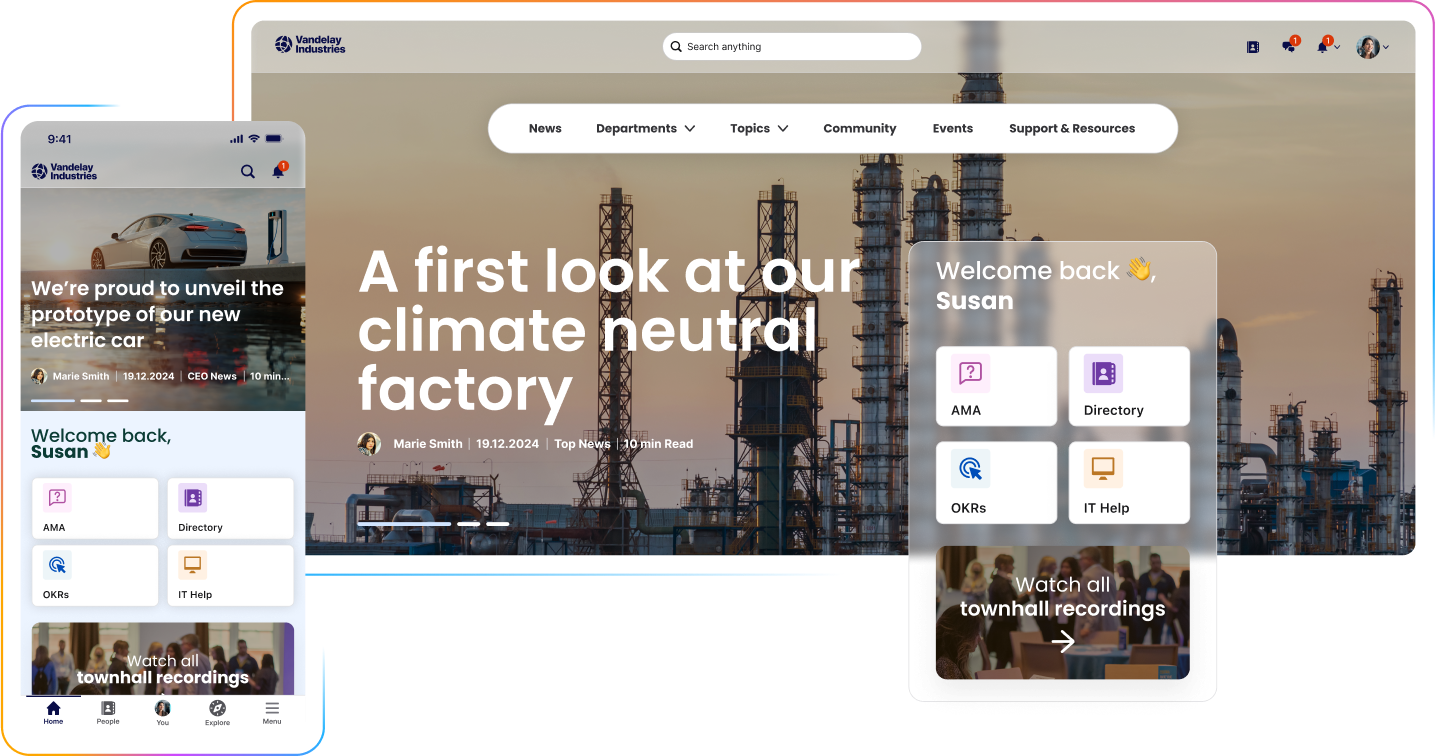A multichannel communications approach that coordinates the delivery of content and communication across multiple channels and touchpoints.
Personalized, top-down communication that’s critical for aligning employees to the mission and vision of their organizations.
Easy access to information and knowledge for admins and users alike.
Seamless digital workplace integrations for a better digital employee experience.
Plus all of the best social intranet facets for connection, peer-to-peer engagement, and recognition.












